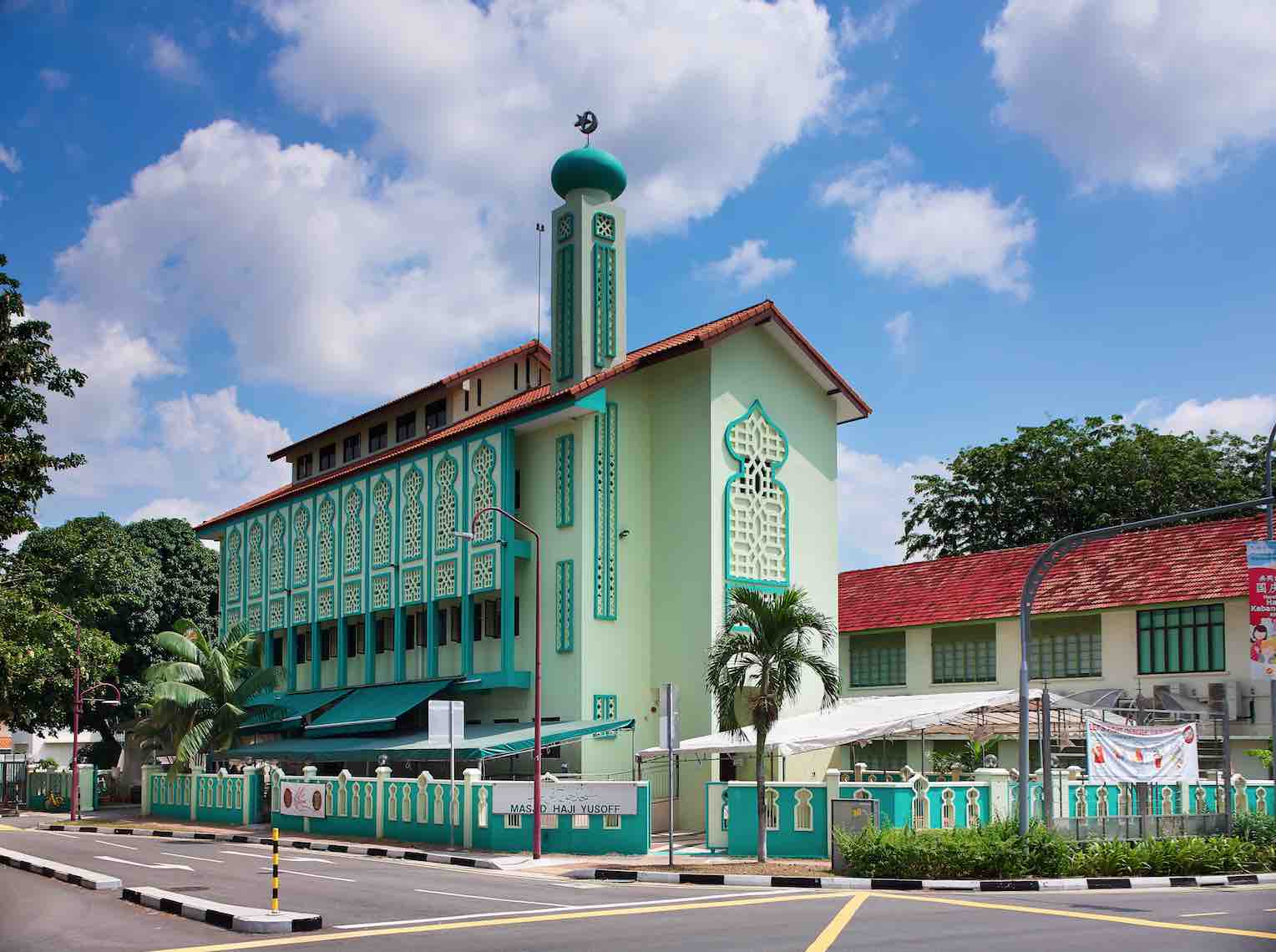From tales of crocodile and pirate attacks to Singapore’s first fast-food restaurant in a housing estate, the new Hougang Heritage Trail, consisting of 18 heritage sites with 10 trail markers, uncovers a treasure trove of lesser-known stories of an area steeped in history, over three thematic trail routes: Landmarks of Hougang, Institutions of Service and Architectural Gems. Join us as we explore the trail that charts the journey of Hougang from a rural area with vast plantations and fruit orchards to a modern, thriving heartland estate.
Hougang Heritage Trail – It All Starts With The Name
Have you ever wondered why Hougang is commonly pronounced as Au Kang, different from how it is spelt? Au Kang actually means “at the back of the river” in both Teochew and Hokkien, and is a reference to Sungei Serangoon at the end of Upper Serangoon Road, around which many Teochew-speaking inhabitants settled. In fact, the first documented use of this dialect name was from way back in 1856.
“Hougang” is its Mandarin version, introduced in 1980 for the new residential town which was being built at the time. While the old Teochew pronunciation has endured and the Teochew community continues to have a strong presence, much has changed. A strong, diverse mix of other communities and cultures has also developed and continues to accentuate the colourful character of one of Singapore’s oldest towns.
Hougang Heritage Trail – 20th Heritage Trail With Two National Monuments
National Heritage Board’s 20th heritage trail is part of its ongoing efforts to document and promote the distinct histories and social memories of different areas where Singaporeans live, work and play. It also features two National Monuments – the Church of the Nativity of the Blessed Virgin Mary and the Hougang Tou Mu Kung – making it the first heartland trail to do so.
Hougang Heritage Trail – A Neighbourhood Of Diverse Faiths & Communities
Many of Hougang’s places of faith have origins dating back to the early kampung days. In the 1800s, the steady arrival of Catholic Teochew immigrants from China who came to Singapore eventually led to the establishment of religious institutions such as the Church of the Nativity of the Blessed Virgin Mary. St Paul’s Church was built in 1936 to serve Anglican Christians living in the Upper Serangoon area. Taoist and Buddhist temples were also established within the vicinity to serve devotees from different clans and dialect groups.
Church of the Nativity of the Blessed Virgin Mary
Located at the end of Au Kang when it was first built, the Church of the Nativity of the Blessed Virgin Mary is the oldest place of worship in the area. With a growing congregation in the late 1890s, the mission constructed the present-day Neo-Gothic building, complete with pointed arches and ribbed vaults. The church continues to provide religious services in Teochew today. In 2005, the church was gazetted as a National Monument.
Hougang Tou Mu Kung
Hougang Tou Mu Kung began as a shrine in Lim Loh village in 1902, and is the oldest temple in Singapore dedicated to the Nine Emperor Gods. The Nine Emperor Gods were popularly worshipped in Malaya, especially among Chinese labourers working in tin mines, as they were believed to be efficacious in warding off epidemics and diseases. The temple was gazetted as a National Monument on 14 January 2005, and remains well known for its grand celebrations during the annual Nine Emperor Gods festival.
Masjid Haji Yusoff
Masjid Haji Yusoff was built in 1921 on land donated by Gujarati merchant and philanthropist Ahmad Mohamed Salleh Angullia (1874-1939), and is the oldest mosque in Hougang. It became such a prominent landmark that the Chinese name for the section of the road near the mosque was Sembahyang Tng (a combination of the Malay word for “prayers” and the Hokkien word for “pavilion” respectively). The mosque now serves as a hub for the Malay-Muslim community living in the Hougang and Upper Serangoon areas.
In addition to its numerous sites of worship, Hougang is also home to a number of institutions established to serve the community. These institutions played important roles in providing medical care, education and social support, and advancing community bonding. Most were founded before the area was transformed into a modern housing town, and these include the Ramakrishna Mission along Bartley Road and various Chinese clan associations.
Hougang Heritage Trail – Developing Into A Modern Housing Town
The Hougang Heritage Trail also traces the transformation from rural Au Kang to a new housing town with modern schools and bustling markets. Unique architectural features, including HDB blocks with carved columns and the iconic Block 316 adorned with a sweeping rainbow mural, are highlighted.
Traditional businesses that have served generations of residents and continue to flourish include Ah Seah Teochew Porridge, Ho Tit Coffee Powder Factory, Cheong Ann Watch Maker, Serangoon Lian Hin Tailor, and Chinese antique furniture and accessories store, Just Anthony.
The Hougang Heritage Trail’s companion guide and map are available in four languages, and can be downloaded from NHB’s heritage portal, Roots.sg. Printed copies of the guide will also be available at NHB museums, as well as the Aljunied-Hougang Town Council (Hougang Office), Hougang Community Club, Punggol Community Club, Paya Lebar Kovan Community Club, The Serangoon Community Club, Aljunied Community Centre, Eunos Community Club and Kaki Bukit Community Centre. You can start your adventure using some of the suggested short trail routes below:















